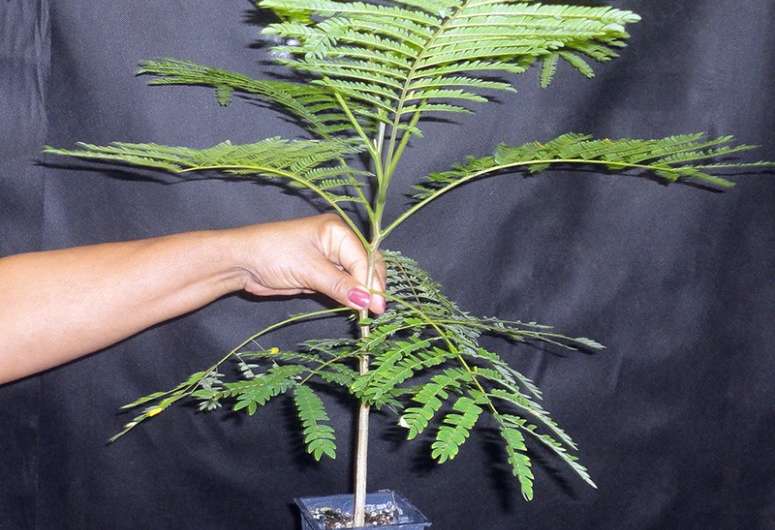Guam research aids in understanding recruitment limitation of rare tree

Serianthes nelsonii, a large, handsome tree found only in the Mariana Islands was federally listed as endangered on Feb. 18, 1987. Since that time there has been relatively little research published on this rare tree.
The University of Guam has studied recruitment limitations of the endangered Serianthes nelsonii tree, and the studies have resulted in a new publication in issue #3 of this year's volume of the international science journal Tropical Conservation Science.
The research was conducted by ecologist Thomas Marler and biologist Cameron Musser within the Western Pacific Tropical Research Center at the University of Guam. Their past research had shown that more than half of seedlings found in growing in their natural setting died in less than one month, and very few of them lived more than three months. The experimental methods used an unprecedented approach to manipulate naturally emerging seedlings with various treatments in attempts to increase longevity.
Most endangered tree species have been subjected to numerous threats that generated the endangered status. But Guam's example is extreme, with the contemporary population consisting of a single mature tree. While habitat destruction and forest degradation played historical roles, biological threats linger. The negative impacts of wild pigs that escaped from farms and wild deer that were intentionally introduced for hunting have been known for decades. Similarly, the list of alien insects that seem to have an affinity for feeding on the naïve island tree's gorgeous leaves continues to grow.
But the new empirical approach that Marler and Musser employed illuminated two additional influential factors that have not been noticed in the past. With the use of fungicides applied to the soil, the research revealed that root diseases reduce seedling health and longevity. With the use of supplemental lighting, the research also revealed that the very low light that reaches the forest floor level reduces seedling longevity.
The publishing team contends that without the empirical approach they employed, these two additional threats would have continued to go unnoticed. The results also reveal another case where successful conservation of an endangered forest resource demands that practitioners employ methods that address a multitude of biological threats.
More information: cnas-re.uog.edu/wp-content/upl … 2/TCS711-reprint.pdf
Provided by University of Guam



















